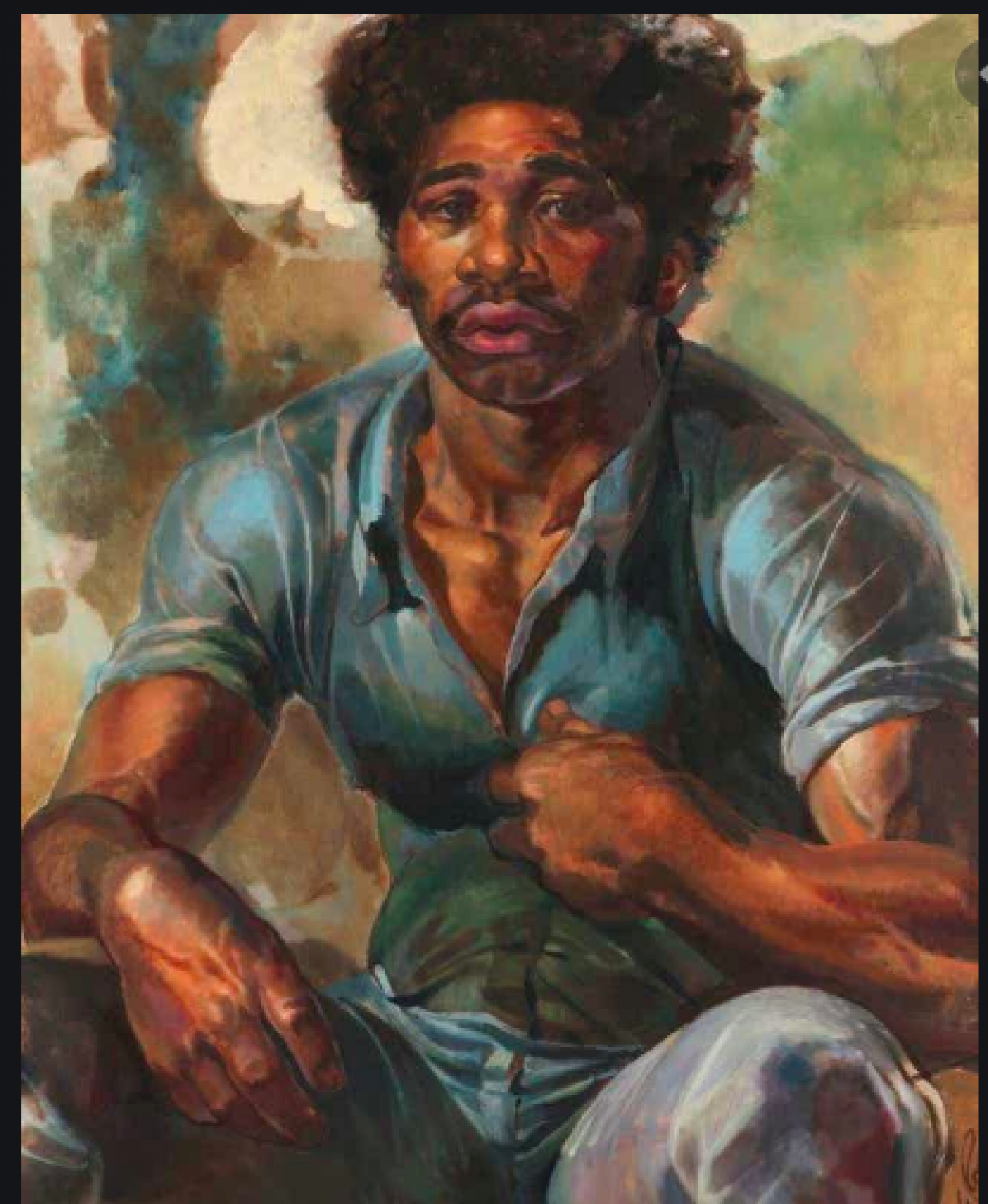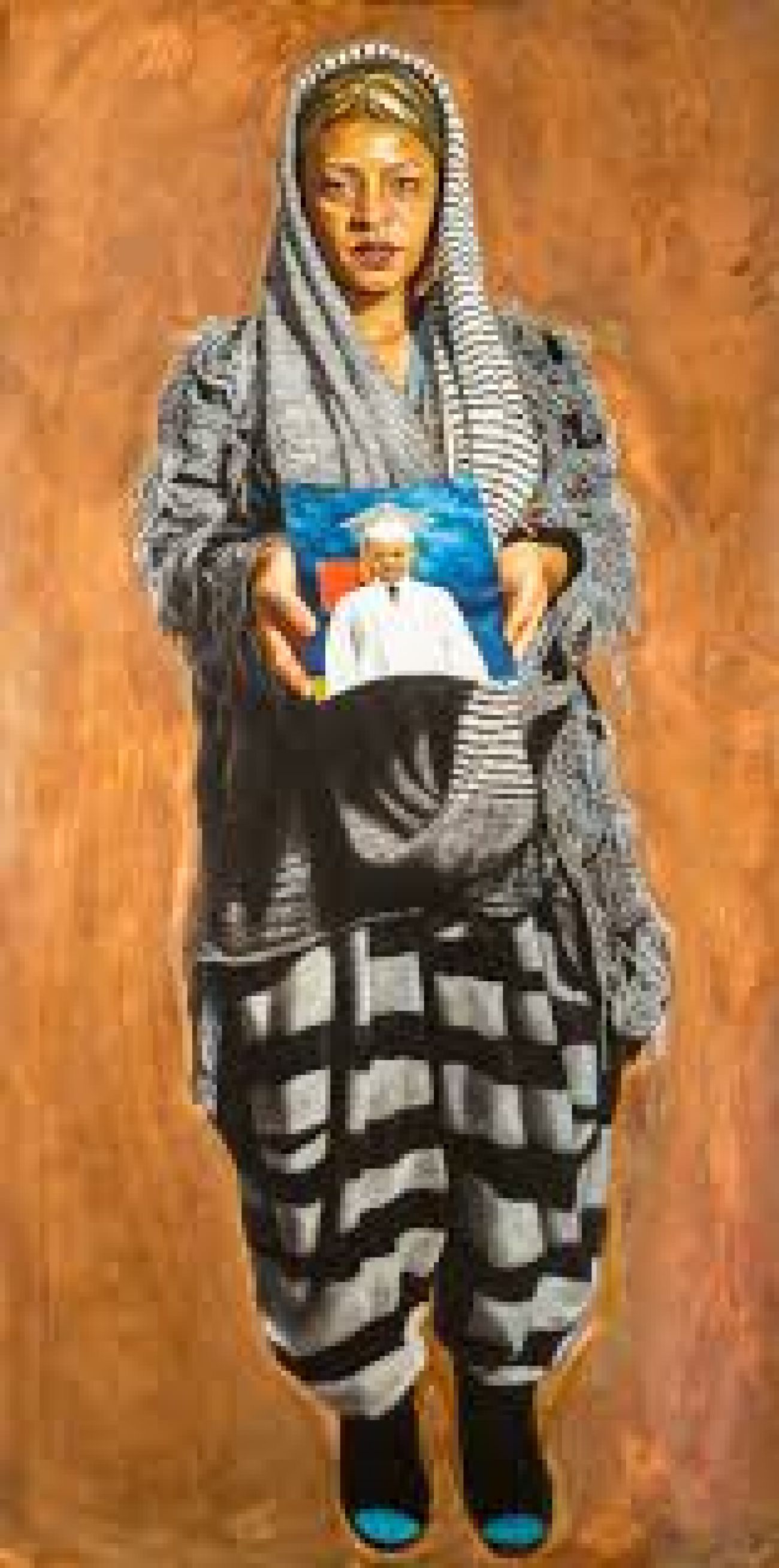Detroit museum renowned for investing in Black art. Staff says it’s all show.

The Detroit Institute of Arts has been hailed in recent years for what many describe as landmark commitments by a major museum to showcase African-American art as well as unprecedented outreach to Black residents.
But a group of former and current staff members say the arts and culture institution has a “hostile” work environment that undermines the inclusive community it strives for.
DIA Staff Action, a group of about 20 former and current staff members, is promoting the hashtag #DecolonizeDIA on social media with an online petition and a list of reforms it says are needed at the museum. The group says it also had input from about 100 supporters, according to seven people familiar with the effort. In less than three days, more than 500 people have signed the online petition.
The group seeks “the transformation of labor conditions, addressing classist, sexist, colonist practices that will result in a more equitable, inclusive and kinder work environment,” according to the petition that was released this week. They also are calling for the removal of director Salvador Salort-Pons.
The group’s criticism is a mix of what they describe as a hostile, chaotic work environment under Salort-Pons tenure as executive director. It threatens the museum’s progress and in some cases leads to culturally insensitive treatment to both staff and audience, according to the petition.
The effort also reflects a deeper philosophical debate taking place in the world of cultural institutions. Some are advocating for museums to “dismantle structural injustice”, as Yesomi Umolu, a curator at the University of Chicago, recently wrote.
Whether staff dissatisfaction is enough to persuade the public and others that the DIA needs an overhaul remains to be seen.
The DIA is the latest in at least half-dozen cultural institutions nationwide who face similar public rebellions, including one that resulted in the executive director of the Museum of Contemporary Art Detroit being fired.
The campaign has shocked several Black Detroiters, including two longtime DIA board members. They are among many Black Detroiters who publicly defended Salort-Pons and the DIA after the group released its aim last week to seek the director’s ouster.
“It is a bit disconcerting considering these [issues] have been a high priority for the board for at least 10 years. It’s part of our DNA,” said Lorna Thomas, an African-American Detroiter who is in her second nine-year term on the board.

DIA director Salort-Pons emailed this statement to BridgeDetroit last week: “While we’ve made progress in diversifying our staff, board, programs and exhibitions, including offering paid internships, we need to continue to be better at creating an environment of inclusion at the DIA, and continue providing staff from all backgrounds in all positions with the tools to be successful.”
DIA officials said it is reviewing the petition and other demands to determine the appropriate response. “We will listen to the input of current and former employees, along with independent experts, to inform decision-making, and to continue our priority focus in the areas of diversity, equity, inclusion and access,” the statement reads.
Stephanie Taylor-Coleman, a Black woman who worked as a graphic designer at the DIA for three years, said the group calling for change should be taken seriously.
“Those truly on the outside of the museum, those who are not employed and are only consulted, attend events, or appear for the glitz and glam amongst the upper echelon, need to look at the totality of the situation,” Taylor-Coleman said. “If you are not an employee there, you have no idea what it is like day to day, within those walls, and should really sit in that thought.”
As the situation plays out, here’s why Salort-Pons and the DIA have strong support among some in the Black community while simultaneously facing calls for reform.
Showcasing African-American art and outreach to Detroiters
From the General Motors Center for African-American Art — the first curatorial department dedicated to Black American art in any major U.S. museum; a landmark show featuring the works of African-American artists from local collectors; to Salort-Pons and his wife embracing local groups such as the Detroit Fine Arts Breakfast Club; the director is helping break ground, some contend.
Salort-Pons joined the museum as a curator in 2008 and became director in 2015. Within a year of landing the museum’s top post, he launched a multimillion-dollar initiative to acquire more art by Black Americans.
Since then, 30 percent of the funds used for art acquisitions have been devoted to purchase 39 works by African-American artists, DIA officials said. The museum has more than 600 works by Black artists in its collection.
“I’m happy to say the DIA has been at the forefront of this all along,” in terms of increasing Black art and community outreach, said Thomas, the DIA board member. She and others said that previous DIA directors had promoted such efforts too, but Salort-Pons but has made important strides.

The Detroit Collects exhibition that debuted late last year featured 60 pieces of African-American art from Detroit-area collectors and was hailed by many critics.
“I was absolutely breathless when I walked into the exhibit,” said Thomas, who had four works from her personal collection in the show. “Salvador and the entire administration really felt it was time that we showcased these important African-American artists.
“With respect to disgruntled employees, I can’t comment. The whole issue of systemic racism, that’s something the whole country is facing. I think it is inappropriate to take aim at the DIA because we have been working on this all along,” Thomas said.
Another DIA board member Reginald Turner Jr., who is Black, said the museum has been working on issues of diversity and inclusion for nearly three decades. He pointed to efforts to reach out to more communities and schools as well as DIA membership.
He expressed confidence in Salort-Pons and the museum to deal with concerns of the staff and their supporters. Turner, a labor attorney, said he was unaware of any recent formal charges of discrimination made against DIA staff.
“We need to continue to be vigilant. We live in a polarizing time. But I hope this is a wonderful opportunity,” to strengthen the museum, he said.
Fellow board member Thomas said she also hopes the campaign leads to meaningful dialogue. “I know that the administration is open to new ideas,” she said.
Detroit cultural critic and author Marsha Philpot, also known as Marsha Music, staunchly supported Salort-Pons in a lengthy article she posted on social media. Philpot, who is African American, pointed to eight events at the DIA that demonstrate Salort-Pons’ commitment to the Black community, she wrote. She cited an event celebrating African-American hair, the screening of an Aretha Franklin documentary, a funk dance party in Rivera Court and a panel discussion featuring longtime Black artists from Detroit.
“There have been some extraordinary events, some emanating from the community itself, held at the DIA, under the leadership of Salort-Pons,” Philpot wrote. At least one of those events attracted people who normally don’t visit museums, she said. “The audience — some, both children and adults, who had never been inside the museum — was clearly electrified by not only the show, but by their own presence within the august walls of the DIA.”

She defended the heritage of the Spanish-born Salort-Pons, which some critics have brought up. “What he does NOT bring to the table is the customary defense of the generational reserving of the museum as a playspace for the affluent, and its lack of connection to the rest of the city. Most of us are well aware that his recent predecessors had never set one foot into neighborhoods in which Salort-Pons has routinely visited.”
Salort-Pons and his wife participated in the Detroit Fine Arts Breakfast Club, a popular social event promoting local artists, she said. Prior to COVID-19, it was held every Sunday at Noni’s Sherwood Grille on Livernois’ Avenue of Fashion on Detroit’s northwest side.
“Some of those who come to the Breakfast Club are economically and socially challenged,” Philpot said. “And then here comes Salvador. And his wife sits right down and starts helping tear off tickets for our raffle and just having a good old time. That was just remarkable.”
A fight for space and attention
The Detroit Fine Arts Breakfast Club has been mentioned by critics, too. Not because they don’t like it. But it’s an example of how Salort-Pons highlights programs he personally becomes involved with at the expense of other programming, they say. And he fails to give other staff credit for the progress, critics contend.
“That is incredible engagement,” said Rebekka Parker, who worked at the DIA for 11 years. “But it’s happening because of the effort and expertise, from a variety of departments and staff who have been working to develop relationships with communities for years.
“But now all those areas are now being undermined by the administration,” said Parker, a former associate educator who left last year. “There is a lack of willingness to listen, the lack of willingness to hear, and a lack of willingness to understand.”
Some past and current DIA staff members say some of the tension is due from the surge in outreach DIA needed to accomplish after the passage of the millage. The millage is $25 million in annual taxpayer money the DIA receives from Wayne, Macomb and Oakland county residents. Voters first approved it in 2012 and then renewed it in March for 10 years. In return, residents from the three counties get free admission. Also, the DIA offers free field trips, including transportation, for tens of thousands of students each year and free programming for local seniors.
A current DIA staff member, who requested anonymity, said that the Breakfast Club was offered regular meetings in the museum’s private dining space because of its affiliation with Salort-Pons but staff coordinating longer-running partnerships with exhibitions, such as with Detroit Public Schools, or youth artists routinely have to scramble for gallery space.
Salort-Pons said he agrees finding space at the museum can be difficult. “The work the museum has done with the Detroit Fine Arts Breakfast Club has been critical to engaging members of the Black arts community in Detroit, and I am proud to have been able to share the museum’s space for a few of their meetings.”
The Detroit Public School exhibition is the longest-running partnership the DIA has with any organization, Salort-Pons said. “We are committed to showcasing as many student works as possible each year, which means that the exhibition has taken place in several locations within the museum galleries since I became director,” he said. This year, the exhibition became the first the DIA presented online, following the museum’s closure in March due to COVID-19.
Salort-Pons gave other examples of highlighting community programming based on staff recommendations. That includes extending the annual Ofrendas exhibition — a show based on Mexican Day of the Dead — from 10 days to four weeks and giving it “prominent space in the Rivera Court exhibition galleries”. The museum also hosted the SuperFest Showcase last fall, “a film festival that portrays disability in all its diverse, complex, and empowering facets,” Salort-Pons said.
“We transformed the Great Hall to allow for the playing of these films with the necessary tools to support audiences with disabilities,” he said. “It is the first time the museum supported a project of this kind, as well as conducting visitor evaluation of the program.”
Former DIA employee Parker, and five current employees, say that under Salort-Pons tenure many staff who have built up the museum’s reputation as a high-quality visitor-centered experience no longer feel valued.
“Rather than measuring people’s quality experience in the museum, they are paying attention to the number of people” who attend the DIA, Parker said.
Jenny Angel, who worked in the museum’s education department for a decade and left last year described the DIA as a “fairly toxic work environment. The leadership direction that the organization’s taken in the last, I would say, four or five years was really just all about optics.”
Charges of systemic abuse and racism
“In a city of majority African ancestry, you get ZERO credit for attending meetings that your a– was supposed to be at anyway to do your job effectively,” Bryce Anderson Small, an Afrofuturist, activist and producer, wrote in a widely shared Facebook post that included the hashtags #DeconlizetheDIA, #DIAStaffAction and #CulturalLiteracy.
“In a city of majority African ancestry, you get ZERO credit for approving programming that Black peoples had to create, plan, organize, fight for, and then implement [with very little institutional support, i.e. budget].”
#CulturalLiteracy #DIAStaffAction #DecolonizetheDIA
My Ancestors taught me to NOT seek acceptance or validation from…
Posted by Bryce Detroit on Wednesday, July 29, 2020
Two Black assistant curators hired by Salort-Pons in 2017 both quit in 2018. Lucy Mensah said she felt like a “token hire,” she told the Detroit Free Press. The other, Taylor Renee Aldridge, told The New York Times the situation at the museum “is emblematic of many abuses and systemic violences that permeate from the top down in museums, and especially the DIA.”
Salort-Pons and others at the DIA may want to diversify, “but at the same time they don’t actually appreciate those voices,” Mensah told the Free Press.
Former DIA employee Taylor-Coleman said she could recall “ instances where I’ve been present for conversations I deemed entirely inappropriate, instances of prejudice.”
None of them had to do with Salort-Pons, with whom she rarely interacted, she said.
She pointed to one incident where she and her mother were detained by a security guard. The two had just left a Sunday film at the Detroit Film Theatre. After the film, she wanted to cut through the museum that was closed for the day to get to the staff parking lot. But a security guard wouldn’t let her go through the closed museum even when she showed her work ID.
“While I am being detained, a white co-worker, longtime employee and very public, is not stopped, is not questioned, and also doesn’t assist me,” she said.
“Now, I don’t put fault on the guard in question, but I said this then and I’ll say this now: What does it say about the leadership? What does it say about the environment? What does it say that I, a Black employee, was stopped and treated differently?
Andrea Montiel de Shuman, a DIA digital experience designer, announced her resignation in June in a scathing essay she posted on Medium. The museum had become “a contradictory, hostile, at times vicious and chaotic work environment,” she wrote.
Museums are not neutral
Montiel de Shuman is one of the former staff members behind the campaign. She is also among those calling for museums to not only take more active stances on social justice issues, but to speak out more on how museums curated their collections and how they are described to the public.
It’s a view some in the world of cultural institutions are now advocating. For a better sense of that movement, check out this online forum called Art Museum Teaching.
“A majority of the stories told at a normal institution comes from a single understanding of history,” Montiel de Shuman said in a BridgeDetroit interview. But in the past few decades, many museum educators now understand that view of history is often incomplete, she said.
“The moment you have an encyclopedic institution like the DIA telling stories [solely] from a European perspective, you are creating a dangerous situation. Because they are not balanced stories. How people are understanding history; how people are understanding the connection between cultures will lead them to their understanding of their own world,” she said.
One example she gave was the display of an 1892 painting by Paul Gauguin called “Spirit of the Dead Watching,” a post-Impressionist work is of the artist’s 13-year-old Tahitian “wife.”

Montiel de Shuman wanted context to explain that Tahiti had been colonized by the French at the time of the painting, and that the artist, who was French, is believed to have sexually abused the girl. She was also concerned that school groups and sexual abuse survivors may also be negativley impacted by the painting. It’s an example of the kind of approach that many of the critics leading the campaigns want museums to take.
Salort-Pons said Montiel de Shuman’s concerns were listened to by staff. “We implemented many of her suggestions to help mitigate possible similar impact on other visitors, and students in particular,” Salort-Pons said. “We provided staff who interact regularly with visitors training on how to address works of art that they might find traumatic or difficult to process.”
The DIA placed this label next to the painting. “Today Gaugin’s approach to the subject matter calls attention to racial and sexual power imbalances during the era of European colonialism.”
See what new members are saying about why they donated to Bridge Michigan:
- “In order for this information to be accurate and unbiased it must be underwritten by its readers, not by special interests.” - Larry S.
- “Not many other media sources report on the topics Bridge does.” - Susan B.
- “Your journalism is outstanding and rare these days.” - Mark S.
If you want to ensure the future of nonpartisan, nonprofit Michigan journalism, please become a member today. You, too, will be asked why you donated and maybe we'll feature your quote next time!




